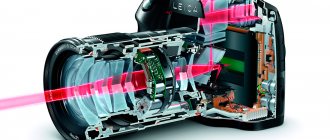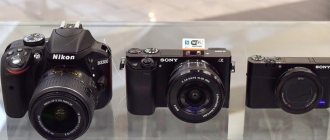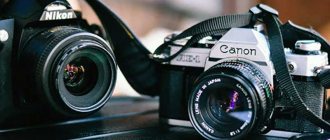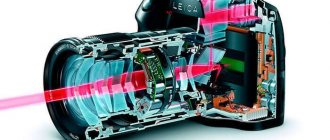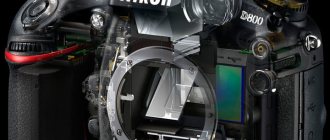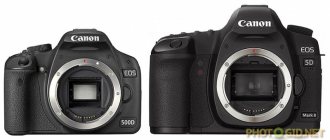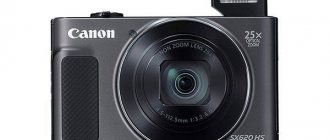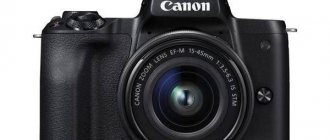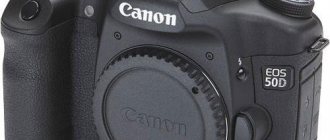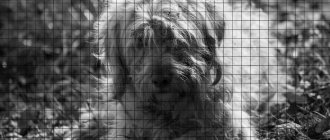Digital cameras are the most common in the modern world. One type or another of these cameras is found in literally every home. They are used by both people who are not interested in photography to capture memorable moments, as well as professional photographers. This article will talk about what types of digital cameras exist and what advantages and disadvantages each of them has. After all, equipment in this category is of the greatest interest, and the cost can vary tenfold.
Fully automatic compact cameras
This type of digital camera independently selects all settings. That is why it is very easy to use: all that is required of the photographer is simply to point at the desired frame and press the shutter button. If necessary, the flash will automatically fire, increase the exposure or change the white balance. This type has quick settings related to the type of shooting taking place. You can select the desired mode, for example, “portrait”, “landscape”, “macro”. By going to the menu, you can manually set the ISO values, white balance, turn the flash on or off, and on some models, control its strength.
Digital cameras of this type usually do not have very good picture quality. You can get a sharp and detailed photo only in good lighting. Also, usually such cameras have a small digital zoom, and the optics are not very high quality. These criteria are important even for beginner photographers, but using compact digital cameras is great for capturing memorable moments just for yourself, family and social media. The cost of such cameras starts from about 2 thousand rubles.
The advantages of such models:
- Small in size, the “compact” will easily fit into your pocket;
- Automatic adjustment, you do not need to have any experience in shooting to use this technique;
- A considerable part of the models are powered by ordinary AA batteries, which can be purchased in almost any part of the world;
- Low cost.
Minuses:
- It is unlikely to obtain truly high-quality images;
- Poor quality optics;
- The lack of manual adjustment of parameters is also a disadvantage, since everyone, even slightly familiar with the shooting process, strives to improve the result;
- Small battery capacity;
- No viewfinder.
Cameras with advanced settings
This type is suitable for people who understand the settings a little better. Cameras of this type already have photo shooting modes, which expands the range of possibilities. Here you can often find several modes, such as:
- Shutter priority mode, which is indicated by the symbols Tv or S;
- Aperture priority mode, with Av or V symbols;
- Manual mode, indicated by the M symbol.
Thanks to this, you can control the shutter speed or aperture, or completely adjust the parameter values manually. Using a variety of parameters, you can create good pictures in not the best conditions and achieve interesting effects. To do this, you need to be able to handle a digital camera and have the skills to use the modes.
Digital cameras with advanced settings use higher quality lenses with more complex optical glass structures. At the same time, the zoom on such cameras can be many times higher.
Photographic equipment of this type have significant advantages over fully automatic ones:
- Simplified access to most of the necessary settings;
- Good quality of equipment and optics;
- Some models are equipped with a viewfinder.
They also have disadvantages:
- A considerable part of such models, despite their name, are not at all compact;
- The price range is very wide.
The cost of this type of camera can vary greatly, but, in general, it starts from 5 thousand rubles. They are perfect for photography beginners who are just starting to master professional settings.
10 legendary Soviet cameras (11 photos)
Author: Serg Pavlov
21 July 2014 15:37
Tags: USSR top10 cameras
42959
11
This time we would like to talk about the legendary devices produced in the USSR: although the vast majority of them are clones of Western models, among them there were also interesting devices with which many have warm memories.
0
See all photos in the gallery
Smena-8M The creative path of many Soviet and post-Soviet amateur photographers began with this primitive camera (in the illustration above). Scale focusing (that is, “by eye”), a minimum set of shutter speeds and apertures, the absence of an exposure meter - all this, with proper skill, could not prevent getting good pictures, especially since the Smena-8M was equipped with a good and fairly sharp triplet lens with a focal length 43mm distance and f/4 aperture.
0
Leningrad In the Soviet Union, many clones of German rangefinder cameras were produced. However, in addition to the FEDs (which were poor copies of Leica) and Zorkikhs (which were a further development of the FEDs), the USSR also produced a truly unique device called Leningrad (1953-1954). It is interesting primarily because it used a spring mechanism, which allowed continuous shooting at speeds of up to 3 fps, and the factory was enough for 12 frames. Other characteristics were also good for their time: a lamella shutter with a shutter speed range from 1 to 1/1000 of a second, a 57 mm rangefinder base, an unusual viewfinder with parallax correction and a “mirror zone” instead of the “double spot” usual for traditional rangefinders. The camera uses interchangeable optics with an M39x1 thread and a working length of 28.8 mm (the same as FEDs and Zorkiye).
0
Zorkiy-4 Cameras of the “Zorkiy” family were probably in every Soviet family. The most popular of them was Zorkiy-4, which was produced practically unchanged from 1956 to 1973, its total circulation amounted to more than 1 million 700 thousand units. Like previous Zorkih versions, the fourth model is equipped with a curtain shutter with a shutter speed range from 1 to 1/1000 seconds and uses lenses with an M39x1 connecting thread. By the way, there is no built-in exposure meter in Zorkom-4, so to create photo masterpieces it was necessary to either estimate the exposure by eye or use a manual exposure meter.
0
Kyiv-2 Another legendary Soviet rangefinder, the legend of which mainly comes down to the fact that it is an exact copy of the Contax II, and early batches of cameras were even assembled from Contax parts, a large stock of which (along with production equipment) was exported from Vostochnaya Germany for reparations. Due to their successful design, Kiev rangefinder cameras were produced virtually unchanged until the 80s. Compared to other Soviet rangefinders, they had a very large and bright viewfinder, were equipped with a lamellar shutter with a shutter speed range from 1 to 1/1000 (in early models - up to 1/1250) seconds, and a Kyiv/Contax mount was used to attach lenses.
0
Kyiv-10 and Kyiv-15 Kiev produced not only rangefinder cameras, but also SLR cameras. The most interesting models, in my opinion, were “Kiev-10” and “Kiev-15”, and “Kiev-10”, released in 1965, became not only the first Soviet camera with automatic exposure setting, but also the first in the world (!) camera with shutter priority mode. Unfortunately, it used an outdated selenium light meter, which was also located outside the camera body. This drawback was corrected in the Kyiv-15 (produced since 1976), which was already equipped with a TTL exposure meter based on cadmium sulphide photoresistors (CdS). The main disadvantage of the cameras was the unique and incompatible bayonet mount. Soviet lenses for "Kyiv-10" and "Kyiv-15" were designated "Avtomat" (for example, "Helios-81 Avtomat").
0
0
LOMO Compact-Automatic Probably the most famous Soviet camera, which gave rise to a whole movement - the so-called “lomography”. It is a “point-and-shoot” with scale-type focusing (i.e. “by eye”) and automatic exposure setting. The camera was equipped with a fairly sharp Minitar-1 lens with a focal length of 32 mm and f/2.8 aperture. Probably the only Soviet camera that is still being produced (by order of the Lomographic Society).
0
Salute The camera, which was called the “Soviet Hasselblad” - in fact, the Hasselblad 1600F was adopted as its model during design. Designed for shooting frames measuring 56x56 mm on medium format film type 120 or 220. All accessories for the Salyut are fully compatible with early Hasselblads, including film backs, interchangeable accessories and lenses. The camera was equipped with a focal length shutter with a shutter speed range from 1 to 1/1000 seconds. In total, 13 B-mount lenses were produced in the USSR, intended for use with Salyut and Salyut-S.
0
Horizon It is now we, spoiled by digital technologies, who take panoramas for granted. And in film times, shooting panoramic shots was associated with a huge number of difficulties. Oddly enough, one of the best panoramic cameras in the world, the Horizon, was produced in the Soviet Union. The lens and shutter in this camera were mounted on a rotating drum; the frame size on standard 35 mm film was 24x58 mm. One of the secrets to the success of the Horizon was the lens - a very sharp four-lens anastigmat MS OF-28P, which was originally developed for military applications. In Soviet times, it was very difficult to buy a Horizont, since the vast majority of cameras were exported.
0
Zenit-19 There were many different models of Zenit cameras produced by the Krasnogorsk Mechanical Plant, but Zenit-19 is rightfully considered one of the best. This device has a mirror viewfinder that displays more than 90% of the frame (in earlier models - only a little more than 60%) and an electronically controlled lamella shutter that operates shutter speeds from 1 to 1/1000 s (earlier Zenits had a shutter speed range from 1/30 to 1/500 s). The device was produced until 1988; the most reliable models are those released in 1984 or later - they were equipped with a redesigned shutter (such cameras can be distinguished by the synchronization shutter speed, which is 1/125 s instead of 1/60 for models with the old shutter).
0
Almaz-103 and Almaz-102 The Almaz cameras were the first and last attempt by Soviet engineers to create a professional small-format reporter camera. The Nikon F2 was taken as a sample - a very reliable professional camera with interchangeable viewfinders and focusing screens. A fundamentally new mirror mechanism and a metal lamella shutter with a vertical stroke, capable of operating shutter speeds from 10 to 1/1000 s, were developed especially for the camera. To attach lenses, a K mount was used (as on Pentax SLR cameras). The Almaz-103 model was considered basic and was not equipped with a built-in exposure meter, but Almaz-102 already had a TTL exposure meter with digital exposure indication in the range of +/- 2 steps. Unfortunately, "Diamonds" became legendary for a completely different reason - as the most unreliable Soviet cameras. The manufacturing plant (LOMO) did not have the equipment to produce parts with the required accuracy. Due to processing problems, the parts of the cam mechanism in the shutter were made not of steel, but of brass, which quickly produced chips that fell into the camera mechanisms and jammed them. As a result, “Almazov-103” was produced just under 10 thousand copies, and “Almaz-102” - only about 80 (not thousands, but copies) due to problems with the supply of the necessary electronics.
Source:
Related links:
- Children's games that are becoming a thing of the past
- The best songs from Soviet films (we add to the list in the comments)
- Yard ventures of Soviet children
- Museum of Soviet Childhood
- Funny
Tags: USSR top10 cameras
Do you like to remember how things were before? Join us, let's feel nostalgic together:
31 4 27
Liked
27 1
33
Partner news
Superzooms
Superzooms are the same “compacts” with improved zoom. They also have a number of manually changeable parameters. Their main difference is the multiple zooms of the frame. Such cameras have a fixed zoom lens that is several times superior to the optics of other “compacts”. While they have a maximum magnification of 20x, the superzoom can go 30-60x closer.
An important feature of this type of digital camera is the presence of stabilization. This allows you to create clear shots without a tripod.
Advantages of models of this type:
- Multiple zooms;
- Small dimensions and weight;
- A number of parameters that can be configured manually;
- Relatively low cost.
Minuses:
- Not the best photo quality;
- Small number of manual settings;
- Impossibility of obtaining professional personnel.
Prosumer cameras
This type of digital camera is suitable for enlightened amateurs; with its help, good professional photographs can be obtained. They also have three shooting modes: shutter priority, aperture priority and manual. Such a digital camera is capable of continuous shooting, creating several frames per second when you hold down the shutter key. The flash of this type of camera is much more powerful. Also, some models make it possible to use an external flash, and sometimes you can even control the lighting from a distance. Various types of light filters and additional attachments are produced for prosumer digital cameras.
In addition to a variety of settings, digital cameras of this type have a larger matrix, which makes it possible to take pictures in good resolution and have high-quality optics.
The possibilities with this type of camera increase significantly; the main thing is to remember that the settings system here is very difficult for beginners. It’s quite easy to create high-quality images in difficult conditions with prosumer photographic equipment, as long as you understand how all the parameters work. This type is often used by professionals when it is not possible to take a lot of equipment with them.
Positive sides:
- Ability to work with settings on a large scale;
- Very good image quality, ability to shoot in RAW format;
- Good quality of technology and optics;
- The ability to create professional-level photographs;
- Powerful flash, the ability to use external additional lighting.
- Availability of light filters and various attachments.
Negative sides:
- The need to have certain skills to use;
- Expensive.
In terms of cost, prosumer cameras are comparable to SLR cameras, and in some cases even exceed them.
The third type of camera: prosumer cameras
For serious, advanced amateur photographers, the next group of cameras is intended, which is called “prosumer”. With such cameras it is quite possible to take professional photographs. They allow you to shoot in RAW format, have automatic and manual settings for shutter speed and aperture, and support high-speed burst shooting mode, when when you hold down the shutter button, the camera continuously shoots at a speed of several frames per second. Various attachments and filters are available for such cameras. The built-in flash is significantly more powerful, and many models have a hot shoe that allows you to use external flash units, as well as connect remote flash control systems.
Such cameras, as a rule, have a larger matrix size, higher quality lenses, and a very developed system of settings, in which a novice photographer may well get confused.
They allow you to take much better photos in a wide variety of conditions. Even professional photographers often purchase such cameras in order to be able to take high-quality photographs when it is impossible to carry a backpack with a DSLR camera and lenses, and they also need to avoid attracting undue attention to themselves.
The price of such cameras is comparable to the price of entry-level SLR cameras, and sometimes even exceeds them.
SLR Cameras
This type of digital camera is professional. Its operation provides close control over any settings. That is why this type is suitable for photographers with a high level of skill. SLR digital cameras have a large matrix, which allows you to achieve the highest quality images among equipment in an affordable price segment.
An important distinguishing feature of this type is the instantaneous response of the shutter key. There is no time lag between the moment the camera is released and the photo is taken, ensuring clear photos even when shooting on the move.
A digital SLR camera can be purchased in “body” form, which means only the body, without optics. But each camera is sold complete with a standard lens, which is universal, which will not allow you to fully demonstrate all the capabilities of the camera. For high-level shooting, it is better to purchase a higher quality lens for the required purposes. This pleasure is not cheap, but it will help you get better results and use all the capabilities of this type of photographic equipment. Also, there is always a huge variety of additional accessories available for DSLRs.
DSLR cameras have many advantages:
- Full control of all settings;
- Obtaining professional personnel with excellent quality;
- Good quality of both technology and optics;
- Availability of all kinds of filters and accessories;
- Speed of work;
- Replacement optics in large quantities for a wide variety of purposes;
- Powerful flash, use of external lighting, etc.
The disadvantages include:
- Considerable dimensions of the cameras themselves, optics and additional equipment;
- Considerable cost of both the body and lenses;
- Making some noise;
- Various particles can get inside the camera, which can lead to spots on the photo and damage to the equipment.
The minimum cost of this type is approximately 10-15 thousand rubles.
Mirrorless cameras with interchangeable lenses
Mirrorless digital cameras began to go on sale not so long ago. During the shooting process, they differ little from mirror models. The main difference and advantage is the absence of a mirror, which makes it possible to reduce the dimensions of the case. Also, this type of camera has an LCD display with which you can focus. The combination of these criteria with the fact that these cameras are otherwise as good as DSLRs creates a demand for such equipment.
But mirrorless digital cameras also have their drawbacks. In particular, there are difficulties with quickly managing settings and working with massive lenses, which is so necessary for reportage shooting.
A digital camera is an indispensable thing for a photographer of any level. There are enough types of such cameras to please everyone: people who are far from photography will like fully automatic models, beginners will like “compacts” with advanced settings, amateurs will be able to learn using prosumer cameras, and DSLR and mirrorless cameras will suit professionals. It won’t be difficult to choose a model that suits your specific goals, capabilities and budget.
The fifth type of cameras: mirrorless cameras with interchangeable lenses.
This class of cameras has the same matrix as SLR cameras, but does not have a viewing mechanism using a mirror and a pentaprism, which allows them to be significantly reduced in size. It is the small dimensions and the ability to directly focus using the LCD display, as well as image quality that is not inferior to SLR cameras and the ability to change lenses, that explain the growing popularity of this class of cameras.
However, compactness also has its drawbacks: it is difficult to quickly control the camera, which is especially important in reportage, sports and holiday photography, and difficulty when working with heavy lenses.
The cost of such cameras is comparable to the price of amateur-level DSLRs.

